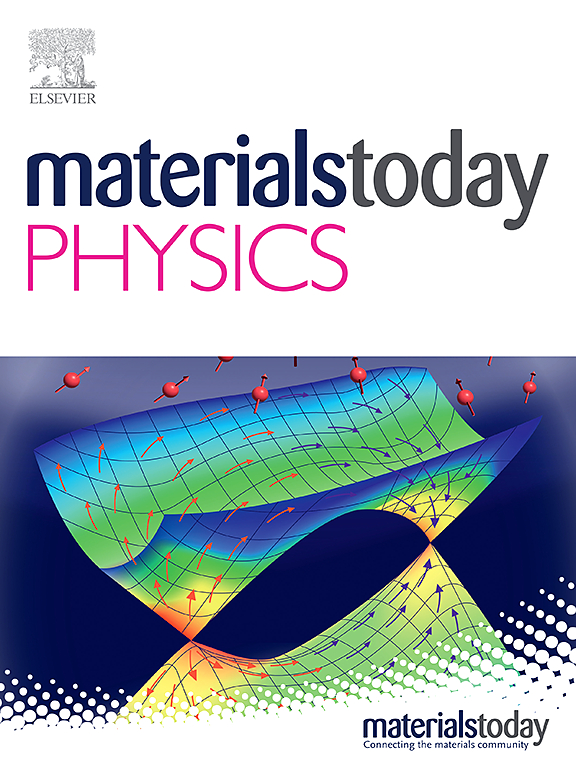Revealing electrical and mechanical degradation of Ni/Bi2Te3 interface through the quantitative interfacial diffusion analysis
IF 9.7
2区 材料科学
Q1 MATERIALS SCIENCE, MULTIDISCIPLINARY
引用次数: 0
Abstract
Bismuth telluride (Bi2Te3)-based thermoelectric devices exhibit significant potential for energy harvesting and thermal management. However, device reliability and further development are critically limited by interface-induced failures, largely because quantitative failure analysis methods are lacking. This study systematically investigates interfacial degradation mechanisms and establishes a method for device lifetime prediction. First, accelerated thermal stress experiments are designed to analyze the Ni diffusion behavior at interface of different-type Bi2Te3-based TE materials, thereby determining the quantitative relationship among temperature (T), duration (t), activation energy (ΔE) and diffusion coefficient (D). Besides, the Ni diffusion depth () is confirmed to scale linearly with the square root of time () for a given diffusion coefficient, which is consistent with Fick's second law (). Moreover, both interfacial specific contact resistivity () and tensile strength () exhibit linear correlations with Ni diffusion depth under a specific degradation mechanism, enabling quantitative assessment of interface stability. Ultimately, adopting standard resistance failure criteria, we completely propose a method for quantitative lifetime prediction, which might provide universal applicability for the reliability assessment of thermoelectric devices and advance the prediction method of interface-induced failure analysis.
通过定量界面扩散分析揭示Ni/Bi2Te3界面的电学和力学降解
基于碲化铋(Bi2Te3)的热电器件在能量收集和热管理方面具有巨大的潜力。然而,由于缺乏定量的失效分析方法,设备的可靠性和进一步发展受到接口失效的严重限制。本研究系统探讨了界面退化机制,并建立了器件寿命预测方法。首先,设计加速热应力实验,分析Ni在不同类型bi2te3基TE材料界面处的扩散行为,确定温度(T)、持续时间(T)、活化能(ΔE)和扩散系数(D)之间的定量关系。在给定扩散系数的情况下,Ni扩散深度()与时间()的平方根成线性关系,符合菲克第二定律()。此外,在特定的降解机制下,界面比接触电阻率()和抗拉强度()均与Ni扩散深度呈线性相关,从而可以定量评估界面稳定性。最终,采用标准电阻失效准则,完整地提出了一种定量寿命预测方法,为热电器件可靠性评估提供了普遍适用性,并推动了界面失效分析预测方法的发展。
本文章由计算机程序翻译,如有差异,请以英文原文为准。
求助全文
约1分钟内获得全文
求助全文
来源期刊

Materials Today Physics
Materials Science-General Materials Science
CiteScore
14.00
自引率
7.80%
发文量
284
审稿时长
15 days
期刊介绍:
Materials Today Physics is a multi-disciplinary journal focused on the physics of materials, encompassing both the physical properties and materials synthesis. Operating at the interface of physics and materials science, this journal covers one of the largest and most dynamic fields within physical science. The forefront research in materials physics is driving advancements in new materials, uncovering new physics, and fostering novel applications at an unprecedented pace.
 求助内容:
求助内容: 应助结果提醒方式:
应助结果提醒方式:


